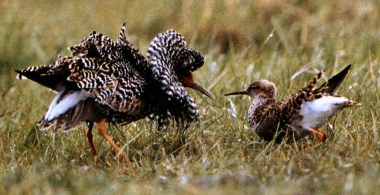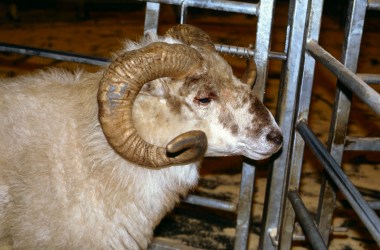Besides natural selection Darwin distinguished also
sexual selection. This is selection based on the 'taste' of
the females. Ruff hens (the females of the ruff males) are thrilled when
seeing the collar of the male. The larger and the more beautiful that collar,
the more probable it is that the male is allowed to mate with the hen. In
the fights the ruff men have the possibility to show their collar. It is
likely that impressing the opponent is also a fiunction of the collar, increasing
the chance for the male with the biggest collar to win.
In the course of the time the collars and the fights will have become more
and more impressive.
In the animal world there are many striking examples relating to sexual
selection. Think of the huge antlers of the (extinct) giant deer, the tail
of the peacock and the fine colours on the face of the mandrill (a monkey).
Know more?
Sexual selection |
A third kind of selection is used already during thousands of years by
man: artificial selection. It is applied in breeding animal
races and ennobling of plants. The very first sheep had four of even six
or eight horns. Because this was rather dangerous (get caught in bushes,
injuries) breeders used animals with fewer horns to get a better race. From
time to time a sheep was born with less horns than normal and this trait
turned out to be hereditary. With such an animal it was possible to raise
a twohorned or even hornless race.
The principle closely resembles natural selection, but it is now the breeder
(and not Mother Nature) who decides the direction of the evolution.
The same can be said of the growing of plant races. Here is the goal to get
plants with more yield or with a better resistance against diseases and
parasites.
Know more?
Artificial selection
|

